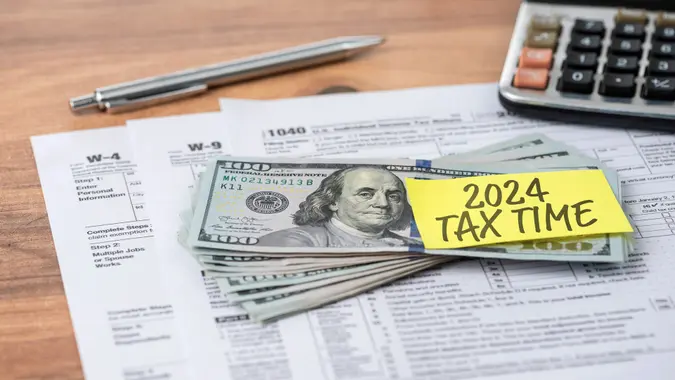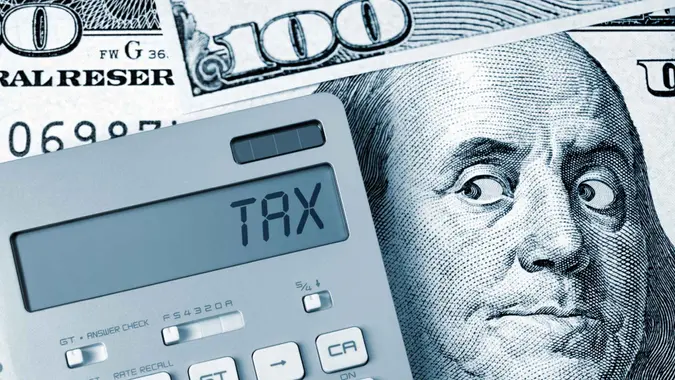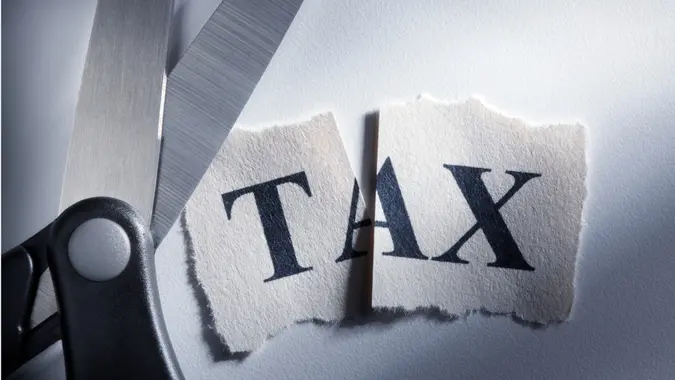Your Tax Refund Should Be 10% Bigger This Year — Here’s Why

Commitment to Our Readers
GOBankingRates' editorial team is committed to bringing you unbiased reviews and information. We use data-driven methodologies to evaluate financial products and services - our reviews and ratings are not influenced by advertisers. You can read more about our editorial guidelines and our products and services review methodology.

20 Years
Helping You Live Richer

Reviewed
by Experts

Trusted by
Millions of Readers
Have you filed your taxes yet? You could potentially see a bigger refund this year, with some people receiving up to 10% more than the previous year.
Per IRS statistics, the average tax refund last year was $3,167, CBS MoneyWatch reported. This was about 3% less than in 2022, when the typical refund was almost $3,300, thanks to generous tax credits like the expanded Child Tax Credit.
The bigger refund is because the IRS adjusted many of its provisions in 2023 for inflation, such as raising the standard deduction and increasing its tax brackets by 7.1%. CBS MoneyWatch noted that this is a historically large adjustment.
“Say your income didn’t keep pace with inflation — you made the same as the prior year but didn’t increase your income by that inflation rate of 7% or so – you could see a better refund,” Mark Steber, chief tax information officer at Jackson Hewitt, told CBS MoneyWatch. “We are predicting a higher refund for those people, up to 10%.”
Steber said this prediction is based on modeling using last year’s tax refund data and inflation adjustments from the IRS for tax brackets, the standard deduction and other provisions. The median worker saw their earnings increase by 5.5% in 2023, according to the Bureau of Labor Statistics, which is below the 7.1% inflation adjustment. Because many people didn’t keep pace with inflation, Steber predicts that middle- and lower-income workers will likely receive higher refunds.
Homeowners claiming expanded home energy tax credits could also see a bigger refund, Mark Jaeger, vice president of tax operations at tax preparation software company TaxAct, explained to CBS MoneyWatch. Another group that could see larger refunds are low-income families with children from the expanded Earned Income Tax Credit. The maximum credit is $7,430, up from $6,935.
However, a December survey by TaxAct found that a quarter of taxpayers said they think they’ll get a smaller refund in 2024 than they did in 2023, Money reported. More than one-third anticipate that their tax refund will be the same amount.
Steber also pointed out that not everyone will get a bigger tax refund, and more could actually end up owing. More people took on side gigs last year due to money concerns, Steber said. If they didn’t pay quarterly self-employment taxes, they could owe the IRS come April 15.
Social Security beneficiaries may also have to pay more in taxes, Jaeger warned, thus getting a lower refund. The Social Security threshold for retirees isn’t adjusted for inflation and has remained at the same level since 1984.
 Written by
Written by 


























